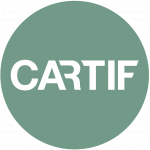events
European Training Network SCHOOL

BIM-BASED SENSING AND DATA COLLECTION
About
The BIM-based Sensing and Data Collection School is the second training event from the Cloud BIM European Training Network, organised by the CARTIF Technology Centre.
This school will offer early stage researchers, industry practitioners and interested faculty members alike the opportunity to attend a series of key lectures given by experts in the field of sensing and data collection. The event will offer a general introduction to theoretical concepts relevant to sensing, data acquisition and storage. This includes sensor hardware fundamentals, data types (point-clouds, building sensor data, RGB/D and thermographic imagery, etc.), and quality evaluation metrics. Students will experience the configuration, data collection and quality management mechanisms through a hands-on exercise based on CARTIF premises.
IMPORTANT DATES
Application submission up to: 18th April 2021
Application decision notification: 26th April 2021
Payment: within 2 weeks after decision notification
Event: 24th – 26th May 2021
Programme
All hours are in Central European Summer Time (GMT+02:00)
Day One 24/05
Collecting Geometric Data
9h00 - 9h30
Welcome from the organizer and CBIM coordinator
Dr. Ali Vasallo
CARTIF Tecnology Centre, ES
Prof. Rafael Sacks
Technion Israel Institute of Technology, IL
9h30 - 10h00
Objectives of the workshop
Ms. Susana Martín
CARTIF Tecnology Centre, ES
10h00 - 11h00
Generic BIM model generation
Activity Lead: Dr. Ioannis Brilakis (UCAM)
Activity Type: Lecture
Topic: Geometric BIM model generation
Activity Outline and learning outcomes:
Vertical and horizontal infrastructure is comprised of large assets that need sizable budgets to design, construct and operate/maintain them. Cost reductions throughout their lifecycle can generate significant savings to all involved parties. Such reductions can be derived directly through productivity improvements or indirectly through safety and quality control improvements. Creating and maintaining an up-to-date electronic record of these assets in the form of rich Digital Twins can help generate such improvements. Research is being conducted at the University of Cambridge on inexpensive methods for generating object-oriented infrastructure geometry, detecting and mapping visible defects on the resulting Digital Twin, automatically extracting defect spatial measurements, and sensor and sensor data modelling. The results of these methods are further exploited through their application in design for manufacturing and assembly (DfMA), mixed-reality-enabled mobile inspection, and proactive asset protection from accidental damage. Virtualization methods can produce a reliable digital record of infrastructure and enable owners to reliably protect, monitor and maintain the condition of their asset.
Instructor Special Requirements: None.
Dr. Ioannis Brilakis
University of Cambridge, UK
11h00 - 11h20 (BREAK)
11h20 - 12h50
Data transfer and export (MVDs, OpenBIM based data exchange with IFC) – pre-recorded session
Activity Lead: Dr. Matthias Weise (AEC3)
Activity Type: Lecture [pre-recorded session]
Topic: Data transfer and export (MVDs, OpenBIM based data exchange with IFC)
Activity Outline and learning outcomes:
This session is focused on OpenBIM-based data exchange using the IFC format from buildingSMART (ISO 16739) and will cover data-exchange and MVD aspects. You will get familiar with the IDM/MVD methodology and will get a better understanding about the definition of Exchange Requirements. Those requirements will be further analysed and then mapped to the IFC standard. For this, we will differentiate between geometry and other alphanumeric data (LOG vs. LOI) and will finally try to formalize as a checkable specification using the mvdXML format.
Instructor Special Requirements: None.
Dr. Matthias Weise
AEC3, DE
12h50 - 13h50 (LUNCH)
13h50 - 14h50
Generic BIM model generation. Cont. / Presentation of the practical exercise
Activity Lead: Mahendrini Ariyachandra, Maciej Trzeciak (UCAM)
Activity Type: Presentation and Practical Session
Topic: Geometric BIM model generation
Activity Outline:
This session involves the modelling of the Construction Information Technology (CIT) Laboratory in the Civil Engineering building at Cambridge and presenting the scan-to-BIM results following a problem-solving process. Students will be provided with 2 unregistered point cloud scans of the lab acquired using a static scanner ‘FARO FOCUS 3D’. Students are required to register/stitch the point cloud files together and to use them as a template to model the Lab in a BIM design tool. This is known as a Scan-to-BIM process.
Learning outcomes of this session are to:
- familiarise students with the emerging technologies in the scan-to-BIM practice
- introduce and familiarise students with basic software tools enabling the processing and stitching of point cloud data (PCD)
- introduce and familiarise students with BIM design tools for the 3D modelling
Instructor Special Requirements: Students are required to install and follow tutorials to prepare themselves for the session.
Ms. Mahendrini Ariyachandra
University of Cambridge, UK
Mr. Maciej Trzeciak
University of Cambridge, UK
14h50 - 15h10 (BREAK)
15h10 - 18h00
Practical exercise: work in groups
Activity Lead: Mahendrini Ariyachandra, Maciej Trzeciak (UCAM)
Activity Type: Presentation and Practical Session
Topic: Geometric BIM model generation
Activity Outline:
This session involves the modelling of the Construction Information Technology (CIT) Laboratory in the Civil Engineering building at Cambridge and presenting the scan-to-BIM results following a problem-solving process. Students will be provided with 2 unregistered point cloud scans of the lab acquired using a static scanner ‘FARO FOCUS 3D’. Students are required to register/stitch the point cloud files together and to use them as a template to model the Lab in a BIM design tool. This is known as a Scan-to-BIM process.
Learning outcomes of this session are to:
- familiarise students with the emerging technologies in the scan-to-BIM practice
- introduce and familiarise students with basic software tools enabling the processing and stitching of point cloud data (PCD)
- introduce and familiarise students with BIM design tools for the 3D modelling
Instructor Special Requirements: Students are required to install and follow tutorials to prepare themselves for the session.
Ms. Mahendrini Ariyachandra
University of Cambridge, UK
Mr. Maciej Trzeciak
University of Cambridge, UK
Day Two 25/05
Collecting Operational Data
9h00 - 9h30
Data transfer and export (MVDs, OpenBIM based data exchange with IFC). Q&A live session
Activity Lead: Dr. Matthias Weise (AEC3)
Activity Type: Q&A live session
Topic: Data transfer and export (MVDs, OpenBIM based data exchange with IFC)
Activity Outline and learning outcomes:
Following Dr. Matthias Weise previous day’s recorded session, this one is devoted to solve doubts and raise questions to him directly.
Instructor Special Requirements: None
Dr. Matthias Weise
AEC3, DE
9h30 - 11h00
Building Energy Management Systems lecture (Collection of operational data)
Activity Lead: Dr Dimitrios Rovas (UCL)
Activity Type: Lecture
Topic: Building Energy Management Systems (BEMS)
Activity Outline:
In this session Dr Rovas will seek to explore, through the prism of value, the landscape of innovations for smarter buildings. In non-commercial buildings, the presence of Building Management Systems is ubiquitous. Yet these very often fail to meet design requirements and operational objectives. The presentation will take a critical look at the current state of practice.
Drawing upon examples from Dr Rovas’ research in the fields of energy management and fault-detection, we will discuss ways new digital technologies are changing the way we design and operate non-domestic buildings. We will also discuss lessons learned and argue that a “value and (organisational) values”-based approach can accelerate innovation in that space. These concepts form the basic premise for a new IEA-sponsored Annex on Data-driven smart buildings (Annex 81). The discussion will also touch upon residential applications and contrast the differences and opportunities in that space.
Learning outcomes:
By the end of this lecture students should be able to:
- understand what a Building Energy Management System is and its role in building operation
- explain the role of BEMS for energy management and fault-detection applications
- understand the role that data platforms play in facilitating data collection, processing
Instructor Special Requirements: None
Dr. Dimitrios Rovas
University College London, UK
11h00 - 11h20 (BREAK)
11h20 - 12h30
Measurement of thermal and indoor environmental parameters (Temperature and Humidity Data Loggers, thermal images, etc.)
Activity Lead: Dr. Virginia Gori (UCL)
Activity Type: Lecture
Topic: Operational thermal and indoor environmental monitoring
Activity Outline:
In this session Dr Gori will introduce techniques for thermal and indoor environmental monitoring of buildings. The operational performance of the built environment is instrumental to inform data-driven design and retrofitting strategies, to reduce the performance gap, to inform policy making, and to enhance the thermal comfort, health and wellbeing of occupants, just to name a few. The presentation will introduce common sensing techniques to assess the main physical quantities affecting thermal and indoor environmental performance of buildings.
Drawing upon examples from Dr Gori’s research in the field, we will discuss the role of technical specifications of sensors and logging systems for the selection of appropriate sensing strategies and the quantification of the main associated uncertainties. Through practical activities we will also explore the basic principles of the design and deployment of robust monitoring strategies, also accounting for the complexity of the built environment in operation.
Learning outcomes:
By the end of this lecture students should be able to:
- explain the main physical quantities of interest for the assessment of thermal and indoor environmental performance of buildings in operation and the most common sensing and processing techniques adopted
- understand the role of technical specifications of sensors and logging systems in the selection of appropriate sensing strategies and the evaluation of uncertainties
- understand basic principles of the design and deployment of robust monitoring strategies, also accounting for the interaction of furnishing and occupants with the sensing apparatus
Instructor Special Requirements: None
Dr. Virginia Gori
University College London, UK
12h30 - 13h30 (LUNCH)
13h30 - 14h30
Assets management, operational data requirements
Activity Lead: Dr. Qiuchen Lu
Activity Type: Lecture
Topic: Assets management, operational data requirements
Activity Outline:
In this session Dr Lu will introduce the operational data requirements, processes, and systems of managing built assets, and further encourage digital innovation in the operation and maintenance (O&M) stage. Achieving a comfortable living environment and smart building management is a complex issue in the O&M phase, which costs around 80% of the whole life-cycle cost. Comprehensive information needs to be recorded and multiple stakeholders would be involved. The process of asset management in the O&M phase is required to maintain integrity, validity and interoperability. Consequently, managing built assets effectively and intelligently is needed to maintain dynamic information, support various activities and contribute to a comfortable built environment. The presentation will provide a comprehensive overview and inspire further thoughts.
Drawing upon examples from Dr Lu’s research in the field, we will introduce the operational data requirements, compare the traditional and digital-enabled (e.g., BIM) management processes and learn from digital-enabled asset management cases (i.e., office buildings). We will discuss how digital approaches are changing the way we operate and manage our buildings.
Learning outcomes:
By the end of this lecture students should be able to:
- understand operational data requirements, existing systems, and traditional processes of built asset management in the O&M phases;
- compare the traditional and digital managing processes and explore the roles of digital innovation;
- understand basic principles of the deployment of digital-enabled built asset management strategies, also learn from one practical case: The ‘smart’ office building: managing daily activities and exploring the applicability of smart building applications in the post-pandemic period.
Instructor Special Requirements: None
Dr. Qiuchen Lu
University College London, UK
14h30 - 15h30
IoT and AI as supporting vectors for BEM
Activity Lead: Mr. Jose Hernández (CARTIF)
Activity Type: Lecture
Topic: IoT and AI as supporting vectors for BEMS
Activity Outline:
In this session, MEng Hernández will analyse the IoT and AI current practices under the Smart Building concept. The keys for connected buildings will be treated, including the existing / popular protocols for data collection in diverse building typologies (residential, industrial…). Benefits, constrains and opportunities will be discussed from a critical perspective.
Considering the availability of data, AI opportunities in the building sector will be investigated for the exploitation of the information. The scope will be the aim of improving the processes: from building construction process to the operation and maintenance, also including energy efficiency. How these digital technologies benefit the building sector will be treated, where contextual data (i.e. static data from building models) will be included as a vector in the data exploitation. Finally, current practices, linked to Building Energy Management Systems, and opportunities will be analysed.
Learning outcomes:
By the end of this lecture students should be able to:
- How IoT/AI helps to achieve a Smart Building.
- IoT: Sensing and gathering data: Protocols, usages and platforms for data management.
- Linking the static and IoT worlds: Making use of dynamic and contextual data.
- Exploiting data for better building management: AI and analytics.
Instructor Special Requirements: None
Mr. Jose Hernández
CARTIF Tecnology Centre, ES
15h30 - 15h50 (BREAK)
15h50 - 16h30
Practical exercise: Operational data collection and management
Activity Lead: Roberto sanz, Sonia Álvarez, Susana Martín (CARTIF)
Activity Type: Presentation and Practical Session
Topic: Operational data collection and management
Activity Outline:
This session will present a hands-on exercise focused on the use of the IoT ThingsBoard framework (as a generic example of use) to collect operational data (temperature, humidity and CO2 measurements) from the CARTIF III building, and configure the data to be stored in accordance with the IFC4 standard. Students will be able to calculate simple analytics to obtain thermal comfort key indexes, including Predicted Mean Vote (PMV) and Predicted Percentage of Dissatisfied (PPD). The visualization features of ThingsBoard will be also presented to support the generation of dashboards for decision making.
Learning outcomes of this session are to:
- familiarise students with IoT frameworks for data collection and management
- introduce and familiarise students with the possibilities of third parties’ tools to be compliant with IFC data representation (dynamic data link to static BIM data model)
- introduce students to the generation of dashboards for dynamic data representation
- present the basis for the calculation of human thermal comfort indexes as PMV and PPD
Instructor Special Requirements: Students will be required to install software (as ThingsBoard) and follow tutorials to prepare themselves for the session.
Ms. Susana Martín
CARTIF Tecnology Centre, ES
Mr. Roberto Sanz
CARTIF Tecnology Centre, ES
Ms. Sonia Álvarez
CARTIF Tecnology Centre, ES
16h30 - 18h00
Practical exercise: work in groups
Activity Lead: Roberto sanz, Sonia Álvarez, Susana Martín (CARTIF)
Activity Type: Presentation and Practical Session
Topic: Operational data collection and management
Activity Outline:
This session will present a hands-on exercise focused on the use of the IoT ThingsBoard framework (as a generic example of use) to collect operational data (temperature, humidity and CO2 measurements) from the CARTIF III building, and configure the data to be stored in accordance with the IFC4 standard. Students will be able to calculate simple analytics to obtain thermal comfort key indexes, including Predicted Mean Vote (PMV) and Predicted Percentage of Dissatisfied (PPD). The visualization features of ThingsBoard will be also presented to support the generation of dashboards for decision making.
Learning outcomes of this session are to:
- familiarise students with IoT frameworks for data collection and management
- introduce and familiarise students with the possibilities of third parties’ tools to be compliant with IFC data representation (dynamic data link to static BIM data model)
- introduce students to the generation of dashboards for dynamic data representation
- present the basis for the calculation of human thermal comfort indexes as PMV and PPD
Instructor Special Requirements: Students will be required to install software (as ThingsBoard) and follow tutorials to prepare themselves for the session.
Ms. Susana Martín
CARTIF Tecnology Centre, ES
Mr. Roberto Sanz
CARTIF Tecnology Centre, ES
Ms. Sonia Álvarez
CARTIF Tecnology Centre, ES
Day Three 26/05
Data Preparation
9h00 - 10h00
Data Quality
Activity Lead: Ms. Amy Lindsay (LOR)
Activity Type: Lecture
Topic: Data Quality
Activity Outline and learning outcomes:
The session will cover:
- Definition of data quality (timely, accurate, clean, unbiased and trustworthy data)
- Examples of how poor / bad quality can lead to bad / ill-informed decisions
- Why data quality needs to be continuously monitored and acted upon
- How automation is central to achieving reliable and consistent data
Instructor Special Requirements: None.
Ms. Amy Lindsay
LOR, UK
10h00 - 11h00
Problems with geometric data (quality control mechanisms)
Activity Lead: Ms. Mahendrini Ariyachandra (UCAM)
Activity Type: Lecture
Topic: Problems with geometric data (quality control mechanisms)
Activity Outline:
Geometric data have been widely adopted to visualise the low-level geometry of the asset (e.g. building or infrastructure) and to obtain the high-level digital representations of the asset enriched with additional datasets. The geometric data has many imperfections that need to be acknowledged for the generation of digital twins of the real-world assets. In this regard, methodologies for predicting and verifying the quality of the geometric data are necessary and factors affecting the quality of geometric data should be investigated. Reliable, practical, cost effective and commonly acceptable quality control mechanisms are introduced and adopted in the industry to evaluate the data quality. Participants will be provided with insight into key factors relating to the problems with geometric data and quality control mechanisms.
Learning outcomes:
By the end of this activity students should be able to know:
- How to define the quality of geometric data?
- What metrics are being used to measure the quality?
- Factors affecting the quality of geometric data
- Frequently adopted quality control mechanisms for geometric data
Instructor Special Requirements: None
Ms. Mahendrini Ariyachandra
University of Cambridge, UK
11h00 - 11h20 (BREAK)
11h20 - 12h30
Linked-data principles (web semantic and meta-data)
Activity Lead: Dr. James O’Donnell (UCD)
Activity Type: Lecture / Presentation / Practical Session
Topic: Linked-data principles (web semantic and meta-data)
Activity Outline:
Buildings tend to not operate as intended, and a pronounced gap often exists between measured and predicted environmental and energy performance. Although the causes of this ‘performance gap’ are multi-faceted, issues surrounding data integration are key contributory factors. The distributed nature of the Architecture, Engineering and Construction (AEC) industry presents many challenges to the effective capture, integration and assessment of building performance data. Not all building data can be described semantically, nor is it feasible to create adapters between many different software tools. Similarly, not all building contextual data can easily be captured in a single product-centric model.
This session presents one possible solution to the problem based upon a hybrid architecture that links data which is retained in its original format. The architecture links existing and efficient relational databases storing time series data and semantically-described building contextual data.
Learning outcomes:
- Understanding the strengths and limitations of linked data and semantic web based solutions in the context of building management
- Understanding the strengths and limitations of adapters
- An open discussion on the opportunities for semantic web based solutions during building operation
Instructor Special Requirements: None.
Dr. James O’Donnell
University College Dublin, IE
12h30 - 13h30 (LUNCH)
13h30 - 15h30
Workshop: Developing a software architecture for storing and linking data
Activity Lead: Mr. Kim Jung (LOLA)
Activity Type: Lecture / Presentation / Practical Session
Topic: Developing a software architecture for storing and linking data
Activity Outline:
Caused by the digitalisation of the economy, massive paradigm shifts are currently taking place in the perception of powerful software, especially in business enterprises. Companies are producing more and more data and are finding that traditional software can no longer cope with the demands of modern data management. In the construction industry, for example, the volume of data is currently growing exponentially due to the introduction of BIM.
In the lecture, we will discuss approaches to what a software architecture must look like in order to meet the new, data-driven requirements of companies. We will talk about object-oriented approaches, about modern databases, about cloud, about IOT solutions and especially about interface designs for good data management.
Learning outcomes:
By the end of this activity students should be familiar to:
- Object-oriented approaches in software development
- Communication with the help of APIs
- Spaghetti Software vs. Digital Component Model
- Processing data streams using the example of Apache Kafka
Instructor Special Requirements: None
Mr. Kim Jung
LOLA, DE
15h30 - 16h00 (BREAK)
16h00 - 18h00
Presentation of practical exercise and feedback
Ms. Susana Martín & rest of instructors
Instructors
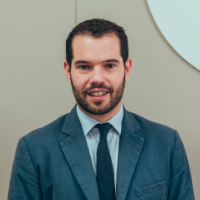
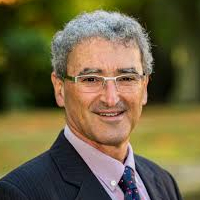
Rafael Sacks
Professor in the Faculty of Civil and Environmental Engineering Technion Israel Institute of Technology
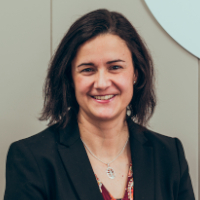
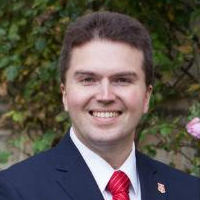
Ioannis Brilakis
Laing O’Rourke Reader in Construction Engineering Civil Engineering Building University of Cambridge

Mahendrini Ariyachandra
PhD Student in Engineering at the Construction Information Technology group of the Laing O'Rourke Centre
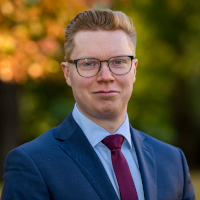
Maciej Trzeciak
PhD student in Engineering sponsored by BP, GeoSLAM, Laing O'Rourke, Topcon Positioning Group, and Trimble
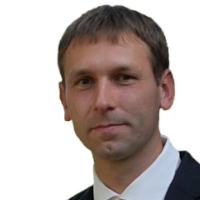
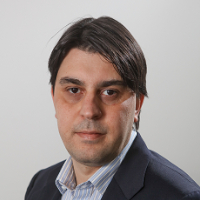
Dimitrios Rovas
Associate Professor at Bartlett School Env, Energy & Resources Faculty of the Built Environment University College London

Qiuchen Lu
Lecturer in Digital Built Asset and Facility Management and also the deputy programme lead for the MSc Digital Innovation in Built Asset Management (DIBAM) at the Bartlett School of Construction and Project Management, UCL
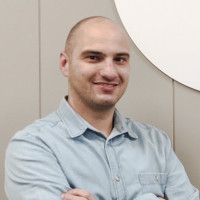
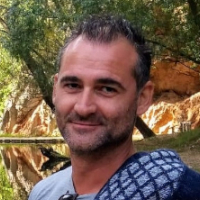
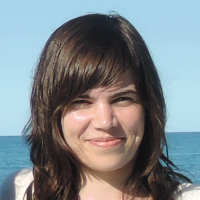

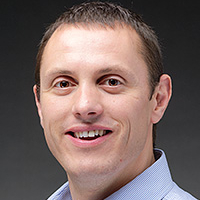
James O’Donnell
Assistant Professor at School of Mechanical and Materials Engineering University College Dublin

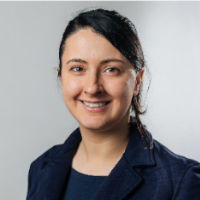
Virginia Gori
Researcher and Lecturer in Building Physics and Engineering at University College London
Register now!
Register process
Price
The course cost is 300€ (VAT included)
Dates
Applications submission for the BIM school 2nd training event will be opened up to 18th April 2021.
Once evaluated the candidates, if accepted you will be notified by 26th April 2021 the latest. The notification of acceptance will include instructions of the payment process to reserve your place.
Once notified the acceptance of a candidate, the payment of the course must be done within 2 weeks after decision notification. In the case this timing is not respected, the organization might assign this spot to another candidate on waiting list.
The payment of the course gives access to the course as well as to the repository where all material (articles, session’s previous materials, course recordings, etc.) will be stored. Also gives access to the course certificate if the basic requisites are covered (see remarks below).
CBIM ETN
This school is part of a series of training events of the Cloud BIM European Training Network (CBIM ETN).
All participants have to attend at least a 70% of the sessions to obtain the course certificate as well as to work on the practical exercise and present it for evaluation on the last day with an acceptable level of quality.
Register form
Applications for the course are now closed.
Organizers
CARTIF
CARTIF is a horizontal, private and non-profit Research Institution, whose main mission is providing innovative solutions to the industry to enhance their processes, systems and products, improving their competitiveness and creating new business opportunities.
CBIM ETN
CBIM is a European Training Network in the area of Cloud-based Building Information Modelling. CBIM brings together five leading universities, two software companies and a research institute from six countries, to provide PhD training through state-of-the-art research.
